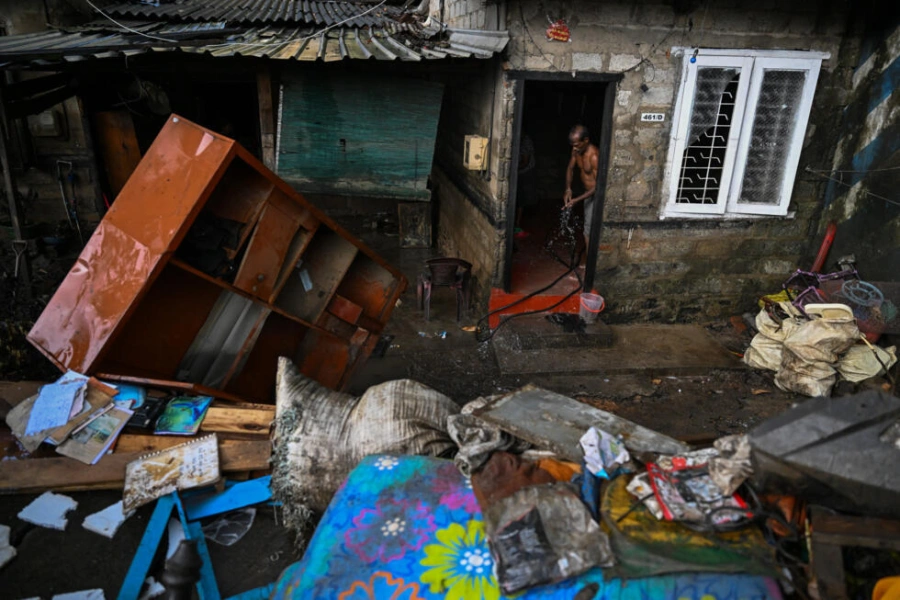KATHMANDU, Dec 31: Rajani Maharjan of Kirtipur wonders if the ongoing random power cuts are intentional attempts of the Nepal Electricity Board (NEA) to take back the country to an era of load shedding. Since the last two weeks, things have gone worse in the Kirtipur area, and she wonders if 'this is just a trailer of the next chapter of dark age'. She is 'pretty sure' that mafias are super active and says it is upon the public to scrutinize the NEA and the government.
"When Kulman left, there were some power cuts, and I thought they were imposing load shedding again. But then things were almost normal," said Maharjan, former assistant professor at Kathmandu School of Law. "But it has been 15 days that power cuts have become frequent. And the power-out time is increasing, which is nothing but a preparation to push the country to the dark age," she added.
Maharjan urged everyone to get ready to gherao NEA office if things don't take the right course. 'Or else the mafias who are desperate to earn billions by selling inverters and batteries will win'.
An electronic shop owner in Sanagau, Lalitpur, Binod Shakya agrees. In the last few days, his business of torch lights and batteries has thrived.
Industrialists warn of padlocking NEA office if electricity is...
-1200x560_20220430072818.jpg)
"They ask for emergency lights citing power outage. Some people also come for the inverter, but its sales are not very high. But people have been repairing inverters," he informed.
There was no light for over half an hour on Tuesday 7PM in the entire Sanagaun area. Before that, smaller locations of the area used to be affected by power cuts. According to Lal Bahadur Maharjan, founder member of 'Action for Social Change', it's not only Sanagaun but many other parts of Lalitpur district faced load shedding at that time.
"The power-cut issue in the last few days has bothered us. As the power comes and goes in a very short interval, people have been quite worried. The ouster of Kulman Ghising was for this; they want to impose load shedding in one way or the other," noted Lal Bahadur alluding to the recent statement of the current acting managing director of NEA, Hitendra Dev Shakya, that 'forced load shedding at times was normal even in the past'.
Before Ghishing's tenure as NEA chief in 2016, the country witnessed upto 18 hours of load shedding. The authority was in a massive loss and load shedding seemed like a chronic disease without a cure. The 'light man's' entry changed things. Soon after he assumed the post, the police arrested dozens of NEA staff and officials for their involvement in power theft. His laudable managerial skills relieved people of inverters and backups and even during the festival of Tihar people did not have to worry about power cuts. Ghishing handed over a profit making NEA when he left.
"Kulman, in the first few months, used to appeal to people to be wise and cooperative so that power loads could be balanced. Later there were no power cuts whatsoever," reminisces Lal Bahadur. "We are watching, and they can't simply fool us. People should come to the street!"
According to Shakya, acting MD of NEA, forced load shedding was imposed in Kathmandu on Monday 6PM, and 'that's a natural phenomenon.' There was a demand for 1456 megawatts of power but the power supply from a unit of mid-Marshyangdi was disturbed resulting in a loss of 30 megawatts of power. Due to overload, there was a power trip in the Khimti-Lamosangu transmission line. This caused the 'Dhalkebar – Janakpur' transmission line out of service. That's why there was disruption in power supply.
"During peak time such we have no option but to go for forced load shedding," he said, to widespread criticism.
Meanwhile, Ghishing, who took an exit from NEA in mid-September maintains that power cut is not necessary unless situations like incessant rains or storms. Secondly, failure to urgently identify and fix problems challenge smooth power supplies. "Load shedding cannot return in Nepal, rather we have to look for ways to manage our excess power in the days to come," he told.





































